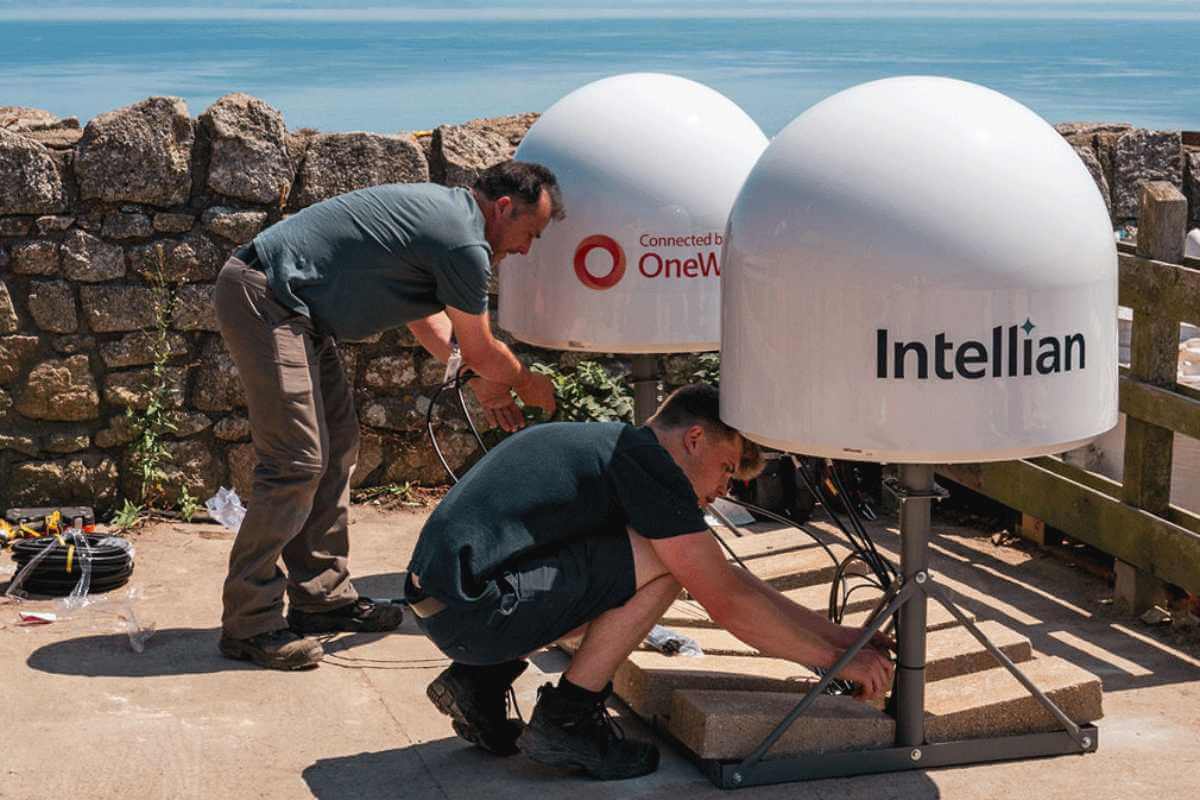
BT and OneWeb have partnered with the UK government to provide high-speed and dependable internet connectivity to Lundy Island for the first time as part of the Alpha Trials program. Situated 19 kilometres off the coast of North Devon, Lundy Island, with its 28 permanent residents and status as a designated Marine Conservation Zone and Site of Special Scientific Interest (SSSI), can now access seamless connectivity with the deployment of Low Earth Orbit (LEO) satellites, stated the official release.
Also Read: OneWeb, Connecta Partner to Boost Broadband Connectivity in the US and Caribbean
Partnership and Connectivity Solution
The connectivity on Lundy Island was accomplished through the installation of an Intellian dual parabolic terminal on the island itself. This outdoor satellite antenna system connects to OneWeb's constellation of over 630 LEO satellites, which are positioned at a distance of just 1,200 kilometres above the Earth's surface. This technology ensures high throughput and low latency, making it feasible to deliver high-speed internet to even the most isolated locations.
OneWeb and BT, in a joint release, stated: the process involves an indoor satellite modem to provide two-way data connectivity. The data travels from the User Terminal (UT) to the Satellite Network Portal (SNP) through the LEO satellites. From there, it is backhauled across OneWeb's Wide Area Network, finally connecting to BT's points of presence (PoP) in London. The traffic is then either routed back into the internet or seamlessly integrated into BT's 21C core network.
Positive Impact on Lundy Island
The positive impact of this connectivity on Lundy Island's residents and environment is considered enormous. Apart from supporting payment systems in local establishments, this high-speed internet facilitates local conservation efforts on an island that harbours three endemic species and is home to over 21,000 seabirds. In 2010, Lundy Island was designated as the UK's first-ever Marine Conservation Zone, making this project even more significant in preserving its unique biodiversity.
Also Read: OneWeb Expands Connectivity Services in Europe and US
Beyond Lundy, BT's plan to provide high-speed connectivity to every corner of the UK by 2028 heavily relies on OneWeb's LEO satellites. These satellites offer a wide array of applications, from serving ultra-remote communities to supporting eco-tourism, search and rescue missions, and temporary deployments like festivals.
Trialling Mobile Connectivity Enhancement
In addition to broadband connectivity, the collaboration between BT and OneWeb extends to trialling ways of enhancing mobile connectivity through satellite technology. In May, the two companies successfully completed a live field trial transmission of 4G data using an LEO satellite link, highlighting the potential for further advancements in communication technology, as reported by TelecomTalk.
Also Read: BT Group and OneWeb Successfully Trial 4G LTE Backhaul Over LEO Network
"A Warden of Lundy Island shared her excitement about the newfound connectivity. She described how it has already accelerated tasks that used to take hours, freeing her to focus on wildlife surveying and facilitating easier engagement with researchers and students."
"Additionally, as a resident, Coastguard Rescue officer, and Community First Responder, the improved connectivity provides peace of mind, enabling video calls to access mainland medical advice when required."
The successful implementation of high-speed satellite connectivity on Lundy Island provides hope for other remote communities worldwide, promising a brighter, more connected future for even the most isolated regions.















